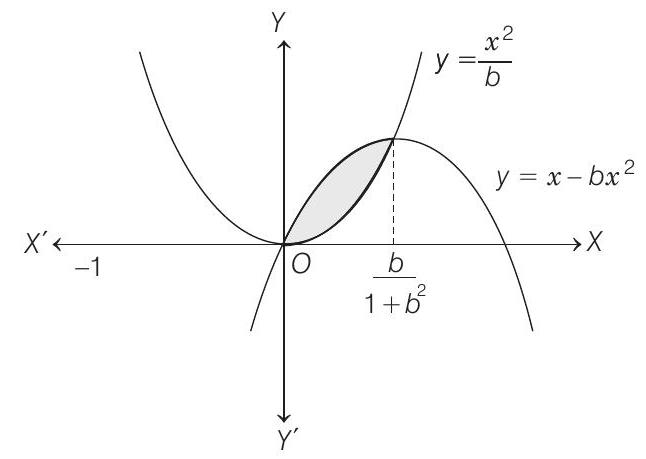Area Question 39
Question 39
- Find all the possible values of
(1997C, 5M)
Show Answer
Solution:
- Eliminating

Thus, the area enclosed between the parabolas
On differentiating w.r.t.
For maximum value of
Sign scheme for

From sign scheme, it is clear that






